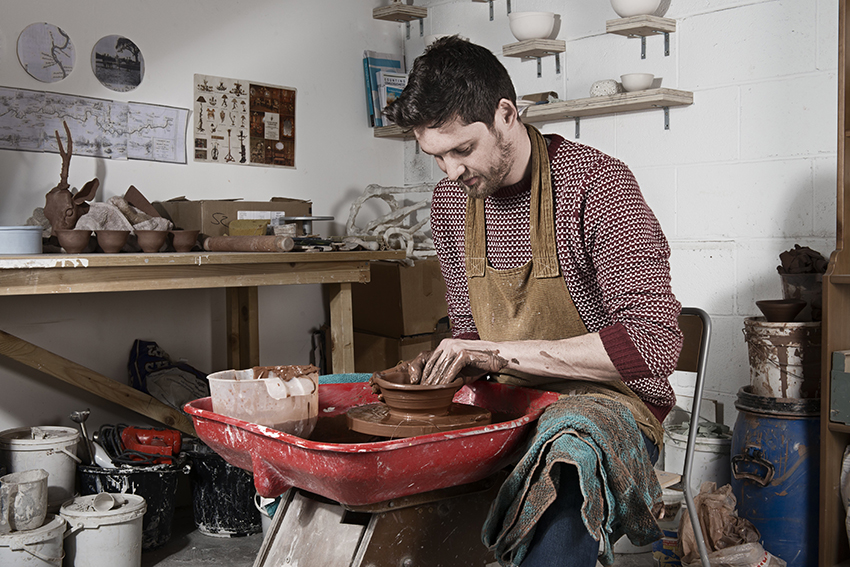This post is part of our 2018 Make It Green series, for the Green Crafts Initiative that champions and promotes environmentally sustainable craft practices. In this series by Craft Scotland and Creative Carbon Scotland, you will hear inspiring maker’s stories as well as useful advice on how you can contribute to a greener craft sector.
We’re pleased to feature makers on our Craft Directory who are working towards a more sustainable practice. In this interview, you will hear from a maker who is part of the Green Crafts Initiative (GCI), a project we partnered with Creative Carbon Scotland to promote and celebrate craft makers with environmentally sustainable practices.
Since graduating from the Glasgow School of Art with a degree in Ceramic Design in 2010, Kevin Morris has continued his practice working with ceramics in a contemporary way. He has become known as the Nomadic Ceramicist working across Scotland to make a range of ceramic works using sustainable materials and methods. Kevin’s most recent work engages with material and place, rooted in the investigation of the life of his grandfather, a man he never met.
Q: Hi Kevin, and welcome to the Craft Directory! Can you tell us a bit more about your practice?
Kevin: Working on heritage-based projects is central to my recent work. This interest began with an investigation into my own family heritage, which then lead to broader research that continues to influence my projects and practice. Ultimately, my work looks to encourage audiences to consider how they interact with their own habitats, be they man-made or natural, as well our collective connections to heritage and tradition.
"I try to approach my work in an experimental way and have a strong relationship with materials and process, as well as the landscape I find myself in."
I am open to embracing new techniques in my work and value opportunities to share these skills and work with a range of other people.
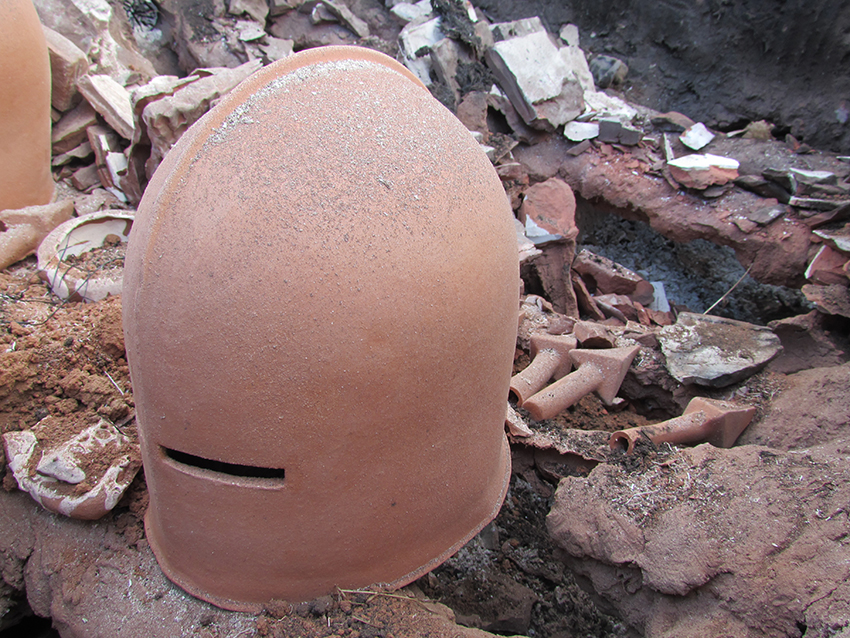
Q: Why is sustainability important to you as a maker?
Kevin: The practice of contemporary makers today is an extension of the lineage of practitioners who have gone before them, and I hope to make work that contributes to this.
My family and friends have always reduced, reused and recycled for practical, economic as well as ecological reasons. I endeavour to lead my own life including my practice as a maker, with these environmental considerations in mind. Habitually collecting and repurposing objects and materials, for instance, industrially produced bricks and tableware, found in antique shops, junk and salvage yards was a large part of my childhood. It’s now an aspect of my practice that allows me to explore and evidence the history of found objects. I research and respond to aspects of sustainability with new materials, methods and processes in my practice. This further challenges me to produce work that interacts between object, material and environment, questioning how these objects are produced and fit into contemporary dialogue around consumption.
Q: We were intrigued by your nickname, The Nomadic Ceramicist, what’s the story behind this title?
Kevin: The landscape and environment I find myself in are hugely important to the development of my practice. This progression is the result of making the most of opportunities to travel nationally, and internationally, via whatever means required (i.e public transport, bike, hitch-hiking etc), to research and make work with a range of artists and institutions, and work on various public projects. Most recently this has included working with the Expatriate Archive Centre this year in The Hague on their tenth Anniversary project Saudade and with the Suttie Arts Space at the Aberdeen Royal Infirmary in 2017 for the Antenna Yagi Fracture Radio exhibition.
Being nomadic has been an important part of the development of my practice. Fi Scott from Make Works coined the nickname during their tour of Scotland, during which I coincidentally met them a number of times.
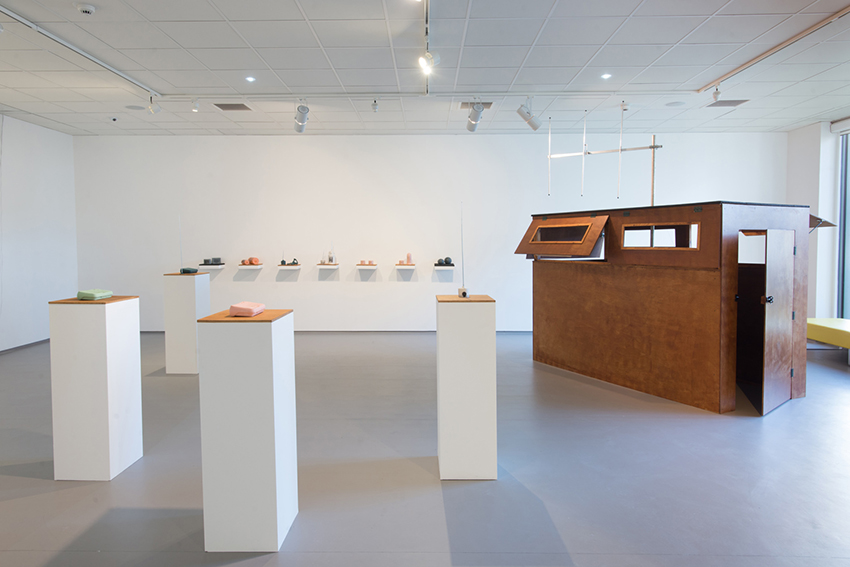
Q: You have quite an active curatorial practice, can you tell us a bit more about this?
Kevin: I have been fortunate to have had the opportunity to work closely with curators and within various working contexts; including galleries, archives, site-specific projects and artist-led initiatives. These include curating as well as exhibiting in the Dundee Ceramics Workshop Members Takeover at Generator Projects, Hot Tub Kiln Machine as part of Glasgow Open House Festival and working closely with the curator for the Monarch of the Glen Ultimate Biscuit Tin at House for an Art Lover. I feel that the link between curator and maker is the starting point from which I explore curatorial practice, with the act of curating being reliant upon a close working relationship with the makers and a considered understanding of their work. In my case, it draws on the rich community of makers within Scotland and reflects my own interests and aspirations. I would hope to have further opportunities to develop approaches to this element of my practice and feel this is achievable through a continued awareness of context and participation within it.
Q: It would be great to hear more about what drove you towards joining the Green Crafts Initiative, has your practice always been sustainable or is this a recent change in the way you work?
Kevin: I was inspired to join the Green Crafts Initiative after my attendance at various Green Tease events by Creative Carbon Scotland. These informal events aim to connect cultural practices and environmental sustainability across Scotland, I found them hugely informative to my approach to sustainability within my practice and beyond, giving me a new level of awareness to the issues surrounding sustainability. Around the same time, I was fortunate to also be involved with the reSOURCE project as part of The Glasgow School of Arts Sustainability Network (ARC).
My involvement with reSOURCE helped me to develop a stronger understanding of the environmental impact and carbon cost of my practice, as well as help me to make environmentally conscious decisions in my material sourcing, methods and processes. The opportunity to receive mentorship and support from Arc, and the open platform for discussion amongst other practitioners and peers, was an invaluable experience that I applied to other similar projects since.
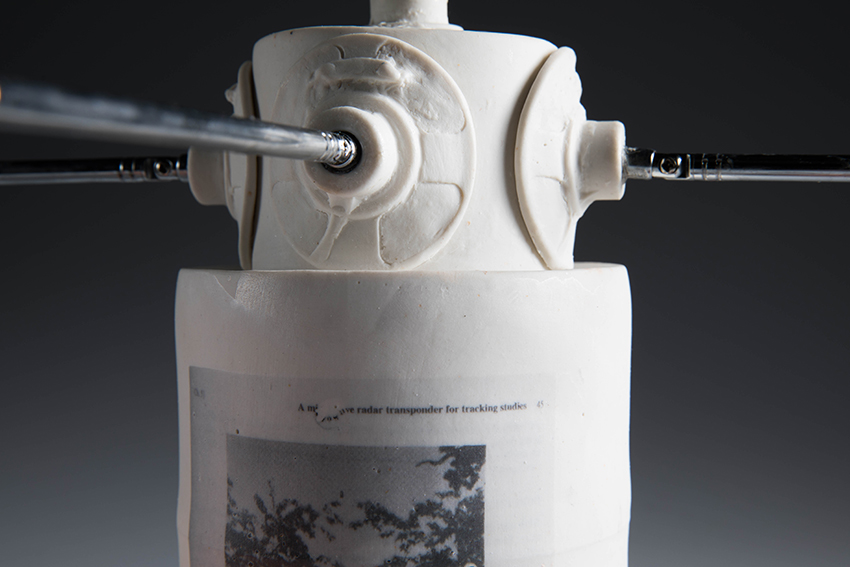
Q: Do you have any advice or tips for other ceramic makers who are considering working in a more environmentally sustainable way?
Kevin: The best investment any maker could make is in education. There are published resources available as well as information online for any ceramicist, studio or school interested in reducing their impact on the environment. Organisations such as Creative Carbon Scotland are also able to offer valuable support and advice.
Simple achievable methods which reduce the carbon footprint of ceramics are reclaiming, reusing and recycling in the studio. It is understood that ceramic production relies heavily on the use of raw materials and natural energy resources.
"There is no doubt that the impact of the individual maker is minimal compared to that of industry, however, it is every makers’ collective responsibility to evaluate their process and attempt to minimise our impact on the environment."
Knowing your firing cycle and the chemical processes that are taking place will allow you to maximise the efficiency of your firings. Exploring fuels and alternative firing technology and energy saving methods are elements I try to employ. Currently, I am continuing to build on and develop the use of atmospheric firing in my own work and am expanding my experience of kiln building. I have found my knowledge of kiln construction has massively improved my understanding firings which have been beneficial to my sustainable practice; however, commercially produced kilns are considerably more efficient due to manufacturing standards.
Fuels and firing materials that we use as ceramic makers have perhaps the greatest impact on our sustainable practices, as well as water consumption. I suggest researching and sourcing materials as locally as possible, before mixing and preparing them yourself; therefore reducing the high carbon footprint associated with importing from further afield, and the industrial impact of producing refined materials. There are also fascinating and sustainable ways to collect and use clay, saving water methods and sustainable means to dispose of or recycle excess waste materials.
Ultimately, I think there is great value in attempting to be self-reliant and resourceful wherever possible when working towards environmental sustainability in your practice.
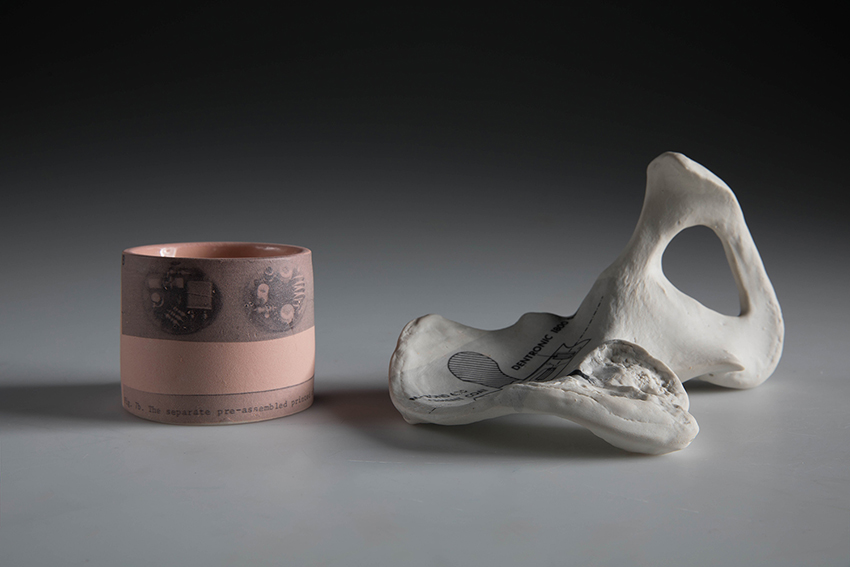
Interested in joining the Green Craft's Initiative? Join today.
This interview has been edited and condensed for clarity.

Kevin Andrew Morris
Read More
-
Full details→
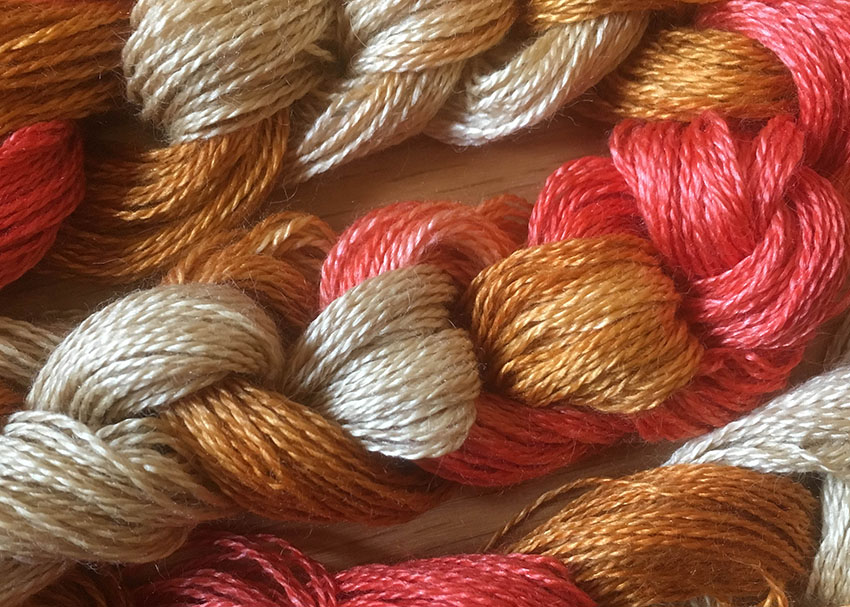
Make It Green Sustainable weaving and dyeing with Cally Booker
We've interviewed textile maker Cally Booker for an insight into her sustainable practice as a weaver using plant-based dyes.
26 Mar 2018
-
Full details→

Make It Green Sustainable textile making with Pieter van der Werf
We've been talking to textile maker Pieter van der Werf about his environmentally responsible studio practice as part of our Make it Green series.
14 Mar 2018
-
Full details→
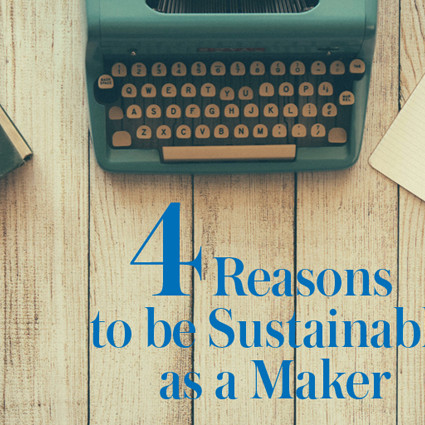
Make It Green 4 Reasons To Consider Sustainability As A Maker
Nature benefits, and so does your business. Our Make It Green series outlines all the benefits of embracing sustainability.
21 Aug 2016
-
Full details→
Make It Green Don't Dump It, Recycle It!
Once you have sourced sustainable materials and turned them into wonderful craft pieces, what do you do with the leftover bits and bobs?
26 Jul 2016
-
Full details→

Make It Green A Creative Response to the Environmental Crisis
Being authentically green is good for you, the earth and builds fans. Hear Andy Stirling Robertson's thoughts on going against the grain and wholeheartedly embracing green making.
28 Jun 2016
-
Full details→
![Sustainable weaving and dyeing with Cally Booker]()
Make It Green Sustainable weaving and dyeing with Cally Booker
We've interviewed textile maker Cally Booker for an insight into her sustainable practice as a weaver using plant-based dyes.
26 Mar 2018
-
Full details→
![Sustainable textile making with Pieter van der Werf]()
Make It Green Sustainable textile making with Pieter van der Werf
We've been talking to textile maker Pieter van der Werf about his environmentally responsible studio practice as part of our Make it Green series.
14 Mar 2018
-
Full details→
![4 Reasons To Consider Sustainability As A Maker]()
Make It Green 4 Reasons To Consider Sustainability As A Maker
Nature benefits, and so does your business. Our Make It Green series outlines all the benefits of embracing sustainability.
21 Aug 2016
-
Full details→
Make It Green Don't Dump It, Recycle It!
Once you have sourced sustainable materials and turned them into wonderful craft pieces, what do you do with the leftover bits and bobs?
26 Jul 2016
-
Full details→
![A Creative Response to the Environmental Crisis]()
Make It Green A Creative Response to the Environmental Crisis
Being authentically green is good for you, the earth and builds fans. Hear Andy Stirling Robertson's thoughts on going against the grain and wholeheartedly embracing green making.
28 Jun 2016
